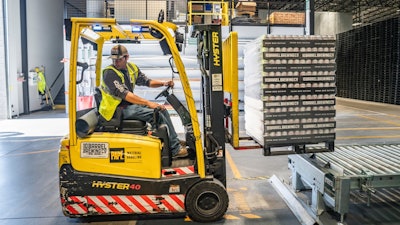
The Coronavirus disease (COVID-19) has had quite the impact on industries across the globe. The abrupt shock to the economy interrupted the supply chain, leaving many companies who typically rely on goods from other parts of the world with a gap in the production cycle and increased delays.
The disruption in the supply chain has led manufacturers to re-evaluate logistics to mitigate risk by considering onshore or near-shoring solutions, moving production closer to their customer base and allowing for quicker service and minimized breakdown in supply. However, to move production is not an easy task, and manufacturers need to evaluate available workforce, location and transportation logistics.
In Michigan, onshoring and near-shoring was imbedded into the FDI Strategy and 5-year strategic plan long before the virus arrived. Now, as countries around the world begin to look toward economic recovery, companies should consider Michigan as they re-evaluate supply chains.
Workforce
One of Michigan’s greatest strengths has always been its workforce – with the nation’s highest concentration of engineers and ranking in the Top 10 for number of workers in the skilled trades. In May, Governor Gretchen Whitmer created the Michigan Workforce Development Board, which is responsible for the continuous improvement of the workforce development system, to achieve her goal of helping 60% of Michigan’s workforce achieve a post-secondary degree or certification by 2030. Additionally, the Jobs Ready Michigan program is helping businesses like Detroit Manufacturing Systems, LLC – a Tier 1 auto supplier – to grow by addressing the costs associated with recruiting and training individuals for occupations that are high-wage, high-skill or high demand. As a result, the company is able to prepare the next generation of skilled workers while remaining competitive in today’s economy.
Location
Strategically, Michigan’s unique connection of transportation and distribution routes translates into a cost-effective supply chain for small to medium-size businesses, with proximity to OEMs in the automotive and medical device industries. A quarter of the more than $700 billion in annual trade between the United States and Canada crosses the Ambassador Bridge in Detroit, the most active border crossing in North America. The Detroit region also sits along the St. Lawrence Seaway as a major port providing central access to the Midwest and international borders. Along with 120,256 miles of paved roadway, 33 active deep water ports, 26 freight railroads with 3,600 miles of track across the state, 18 commercial airports, including one of the largest U.S. air hubs in North America and a leader in warehousing, Michigan leads the Midwest and is ranked No. 4 for warehouse distribution, making the state an ideal location for companies of all sizes to conduct business.
Rapid response
Following years of laying the groundwork to develop a wealth of supply chain assets and expertise, when the pandemic hit Michigan manufacturers large and small acted quickly to pivot their business models and assist industries most affected. The Big 3 Automakers – General Motors, Ford Motor Co., and Fiat Chrysler Automobiles – stepped up in a big way, retooling their manufacturing capabilities to produce millions of personal protection equipment (PPE) for frontline healthcare workers and patients.
Likewise, a number of small and mid-sized manufacturers played critical roles, leveraging state-led grants and support programs to fill shortages of necessary health and human service supplies.
Commonwealth Sewing Co. and the Industrial Sewing and Innovation Center (ISAIC) added medical gowns and surgical masks as permanent fixtures to their high-capacity garment manufacturing operations.
TentCraft had never manufactured health products, but pivoted operations to make PPE.
As we move toward economic recovery efforts in Michigan, manufacturing companies are applying their new knowledge and resources to innovative business models to reduce risk.
As the state that is within 500 miles of nearly half the U.S. and Canadian population and as home to more than 1,400 foreign companies with more than 5,000 locations throughout the state, Michigan has kept a close eye on how global markets have responded to the pandemic and observed how companies are rethinking their supply chain strategy. Those assets, along with the foundations we have been building as a state that leads in supply chain assets, makes Michigan a place where businesses can thrive in a globally connected location and access the talent and supply chain needed to find success.











